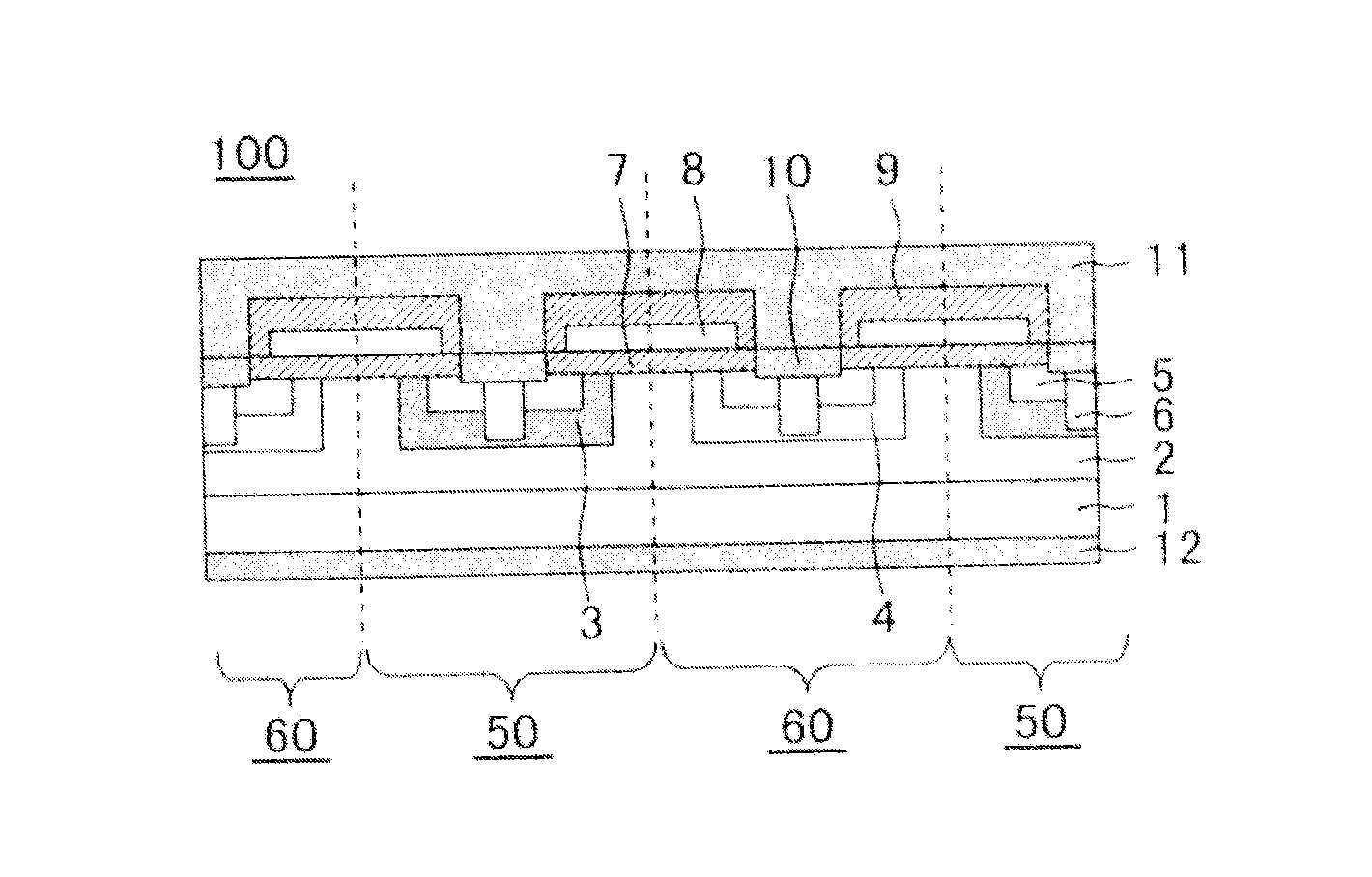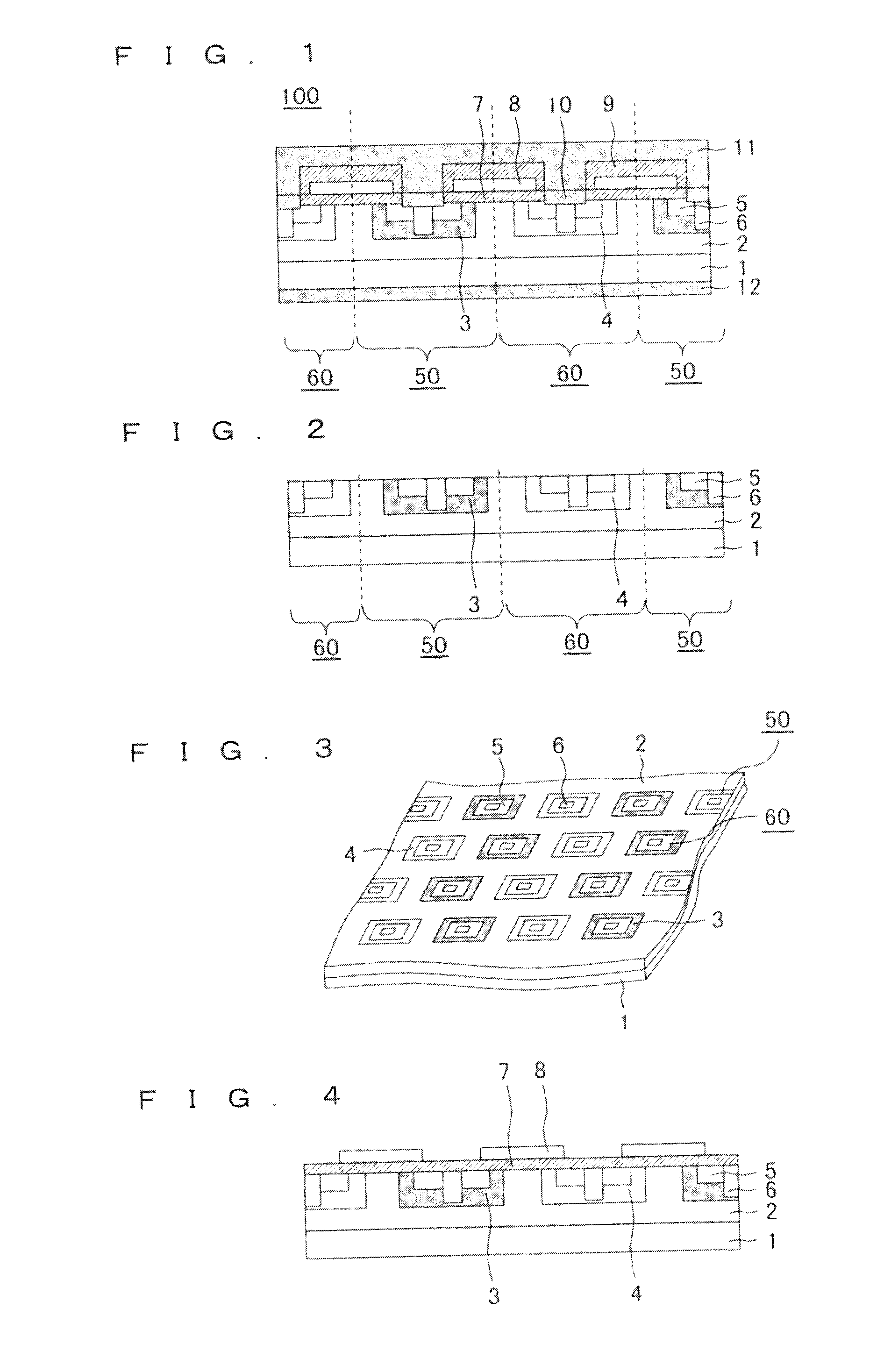Semiconductor device
- Summary
- Abstract
- Description
- Claims
- Application Information
AI Technical Summary
Benefits of technology
Problems solved by technology
Method used
Image
Examples
embodiment 1
[0024]Firstly, a configuration of a semiconductor device according to an embodiment 1 of the present invention is described. FIG. 1 is a cross-sectional view of a part of the semiconductor device according to the embodiment 1 of the present invention. An n-type MOSFET is described as an example of the semiconductor device according to the present embodiment. Alternatively, the semiconductor device may be a p-type MOSFET or another insulated gate semiconductor device.
[0025]An effective acceptor density hereinafter refers to a density obtained by deducting the density of n-type impurities from the density of p-type impurities in a predetermined area. An effective acceptor concentration hereinafter refers to a concentration obtained by deducting the concentration of n-type impurities from the concentration of p-type impurities in a predetermined area. The effective acceptor density and the effective acceptor concentration are used to explain the n-type semiconductor device in the prese...
embodiment 2
[0068]As described above, in the embodiment 1, the impurity concentration in the well region is adjusted to change the temperature characteristic of each unit cell. The present invention should not be limited to the above. As an embodiment 2, the following describes the semiconductor device in which the interface state density at the interface between the well region and the gate oxide film is adjusted to change the temperature characteristic of each unit cell.
[0069]The following describes an aspect different from the embodiment 1 of the present invention, in other words, the adjustment of the interface state density aimed to change the temperature characteristic of each unit cell, and the description of the same or corresponding aspect is omitted.
[0070]In the embodiment 1, the first and the second well regions 3 and 4 have different p-type impurity concentrations, so that the channel resistance has different temperature characteristics being positive and negative in different unit ...
embodiment 3
[0085]In the embodiments 1 and 2, a plurality of kinds of well regions are formed such that the channel resistance has different temperature characteristics in different unit cells. In the present embodiment, the well region is designed such that, out of the channels on a plurality of sides of each individual unit cell having a polygonal shape, the channels on some sides have the channel resistance value in the positive temperature characteristic and the channels on the other sides have the channel resistance in the negative temperature characteristic. This alleviates the temperature dependence of the ON resistance in each individual unit cell.
[0086]The following describes the aspect different from the embodiment 1 of the present invention, in other words, the adjustment of the dopant concentrations aimed to change the temperature characteristics of channels on a plurality of sides of each unit cell, and the description of the same or corresponding aspect is omitted.
[0087]A configur...
PUM
 Login to View More
Login to View More Abstract
Description
Claims
Application Information
 Login to View More
Login to View More - R&D
- Intellectual Property
- Life Sciences
- Materials
- Tech Scout
- Unparalleled Data Quality
- Higher Quality Content
- 60% Fewer Hallucinations
Browse by: Latest US Patents, China's latest patents, Technical Efficacy Thesaurus, Application Domain, Technology Topic, Popular Technical Reports.
© 2025 PatSnap. All rights reserved.Legal|Privacy policy|Modern Slavery Act Transparency Statement|Sitemap|About US| Contact US: help@patsnap.com



